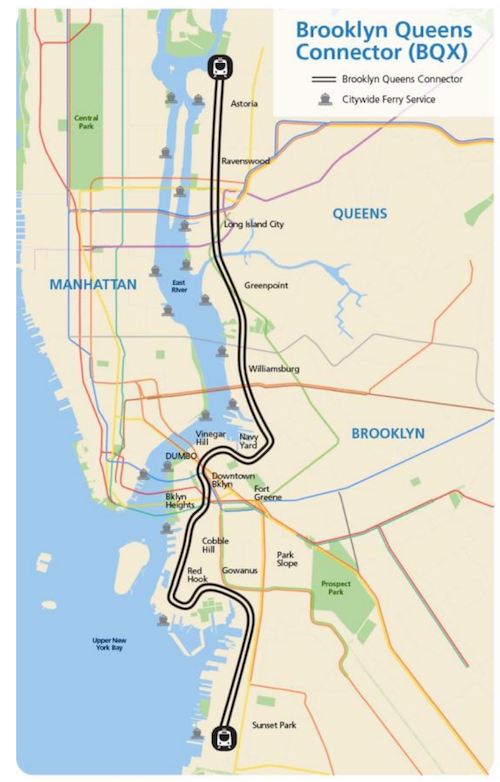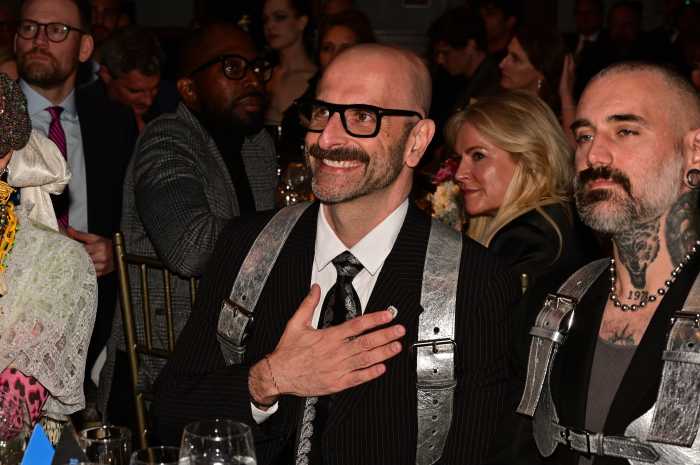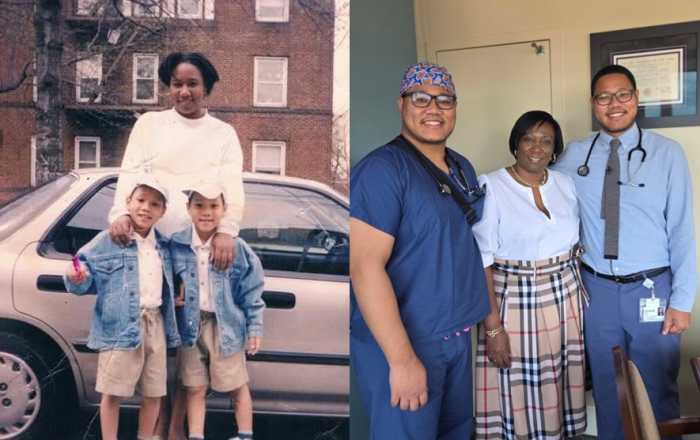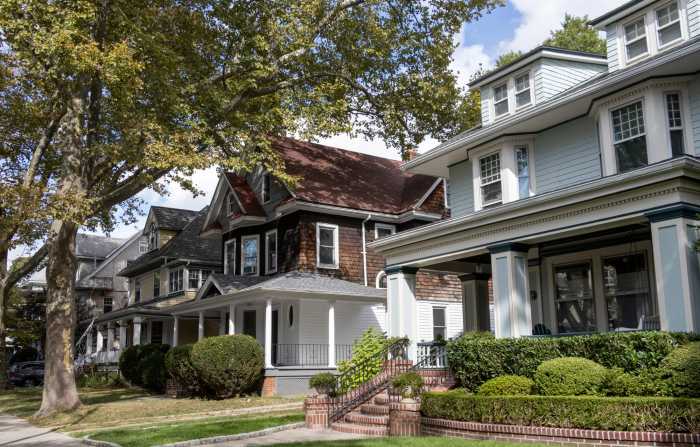The controversial proposed Brooklyn-Queens Connector (BQX) streetcar project got back on track yesterday with the 42,000-member strong Transport Workers Union (TWU) Local 100 holding a rally at NYCHA’s Red Hook Houses in support of the transportation plan.
According to the plan, the BQX will start in Sunset Park and will run through Gowanus, Red Hook, Cobble Hill, Brooklyn Heights, Downtown Brooklyn, DUMBO, Vinegar Hill, The Navy Yard, Williamsburg, Greenpoint before heading to Long Island City and ending in Astoria. The 16-mile route along the East River waterfront corridor is planned to run 24-hours-a-day with five-minute intervals at peak hours with stops a half-mile apart.
“Mass transit is the economic lifeblood of the city. A streetcar along the Brooklyn-Queens waterfront will attract more businesses to the area, including manufacturers, and increase job opportunities. We see this as a vitally important project, said Local 100 and TWU of America International President, John Samuelsen.
Samuelsen went on to commit Local 100’s membership and political resources to lobby elected officials in support of building the BQX.

The transit union is hoping to bring a positive impact to the corridor with the project through specific goals including: expanding the city’s mass transit system with an integrated fare with the Metropolitan Transportation Association’s (MTA) subways and buses, spur economic development through a supply-chain of manufacturers producing equipment and parts for the streetcar and prioritize community hiring by providing jobs opportunities for high school students pursuing a college degree immediately after graduation.
“Too often the people who most need a reliable transit option are the same people who lack a voice, and for whom a shorter and easier commute can make the biggest difference. The men and women of the TWU know better than anyone how much of a difference transit can make in the lives of New Yorkers, and we’re so grateful for their support,” said Ya-Ting Liu, Executive Director of the Friends of the BQX.
However, not all members of the community are in support of the project. One dissenting voice is UPROSE, Brooklyn’s Oldest Latino based organization out of Sunset Park believes the project is beneficial to the developers in the area than the residents.
“It doesn’t address the transportation needs of the people in the corridor, who have been in need of transportation services for many years. Transportation in this corridor did not become a priority until people started getting displaced and developers determined for our community that it was a priority to them,” said UPROSE Executive Director Elizabeth Yeampierre.
“This area could really be interesting, different and innovative and serve a lot of the needs of the local people and the region. Unfortunately, the political world is more aligned with the needs of the developers than the needs of the people in this corridor,” Yeampierre went on to add.
At a meeting late last year in downtown Brooklyn, transit experts and Brooklyn Heights residents expressed skepticism towards the ambitious project citing funding, traffic lane closures and lack of accessibility as main concerns.
The project is expected to cost $2.5 billion without integration with the current mass transit system. Riders will have to pay a separate $2.75 fare for the trolley and another $2.75 in bus or subway fare per one-way commute.
Residents and opponents also worry that vulnerable communities will have to foot the price tag for the project. According to the plan, the trolley will be funded via tax increment financing. This means that the surplus revenue caused by rising property values along the corridor will be allocated towards the project.
The problem, says CUNY Graduate Center Ph.D. student Samuel Stein, is that the project won’t receive the necessary funding unless those property values rise astronomically.
“So we’re talking about significant new development that’s a) in a flood zone and then b) in a number of neighborhoods that are pretty vulnerable to gentrification,” said Stein.
The project is still in the planning phase and is expected to serve the 400,000 people who live and 300,000 people who work along the Brooklyn-Queens waterfront, including 600 TWU members and 44,000 public housing residents.






